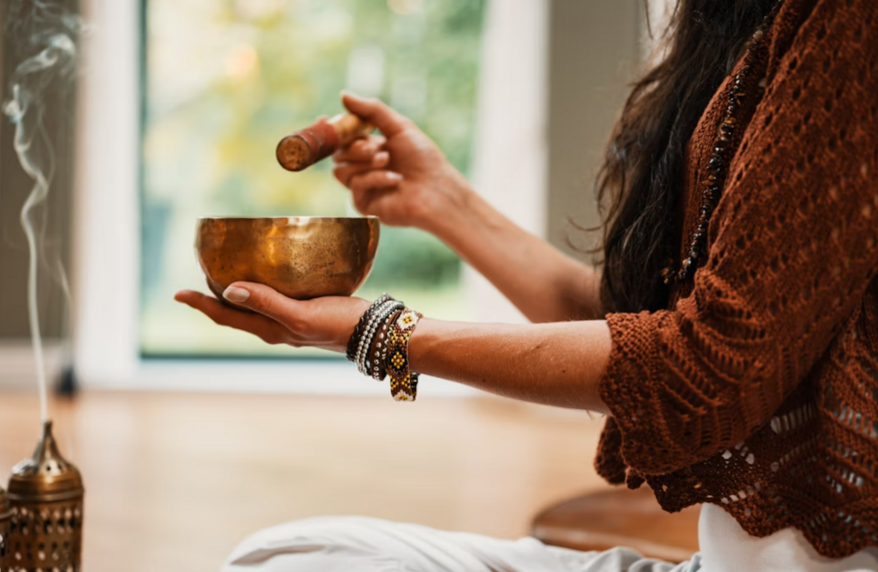Padmasana (lotus position), closed eyes, straight spine, hands resting in the lap with palms facing upwards, a gentle smile on the face, and a calm atmosphere — this is the image that comes to mind the moment we hear the word meditation. But what do you actually do when your eyes are closed?! How long do you stay like that?! Here are a few simple tips to help you begin your journey toward yourself.
"Meditation is the delicate art of doing nothing," says Sri Sri Ravi Shankar.
Well then, how does one do nothing?! Here are a few easy beginner steps to follow in meditation. Regular practice leads to deep and deeper experiences. So now, let’s begin with these 10 meditation tips:
1. Choose a Convenient Time
Meditation is essentially a time for rest, and you should feel completely comfortable. Choose a time when you know you won’t be disturbed and are free to relax and enjoy. The hours of sunrise and sunset, when nature transitions between day and night, are also suitable for practice.
2. Choose a Quiet and Peaceful Place
Along with a convenient time, choose a place where you won’t be disturbed. A quiet and peaceful environment can make the meditation experience more pleasant and relaxing.
3. Sit Comfortably
Your posture also matters. Make sure you are relaxed, comfortable, and stable. Sit with a straight spine; your shoulders and neck should be relaxed, and your eyes closed for the entire process. The idea that you must be in Padmasana (lotus pose) to meditate is a common myth.
4. Keep Your Stomach Relatively Empty
A good time to meditate is before eating. After a meal, you might feel sleepy during meditation. However, if you’re very hungry, don’t force yourself. It will be difficult due to the cramps from an empty stomach, or you might end up thinking about food the entire time! In that case, you can meditate about two hours after eating.
5. Do a Light Warm-Up
A few stretches or Sukshma Yoga exercises before meditation help improve blood circulation, eliminate restlessness or inertia, and make the body feel light. You will be able to stay still for a longer period of time.
6. Take a Few Deep Breaths
This is another preparation for deeper meditation. Deep inhaling and exhaling, as well as alternate nostril breathing (Nadi Shodhana Pranayama), before meditation is always a good idea. It helps you settle into a breathing rhythm and guides the mind into a relaxed meditative state.
7. Keep a Gentle Smile on Your Face
You’ll feel the difference. A soft smile keeps you relaxed, in harmony, and enhances the experience of meditation.
8. Play a Guided Meditation
Guided meditation is a good idea for beginners. It will help you get started. For example, begin with this meditation from Sri Sri Ravi Shankar. All you need to do is close your eyes, relax, follow the instructions as you hear them, and simply enjoy the experience. You can also choose from a list of other online guided meditations depending on what suits you best.
9. Slowly and Gradually Open Your Eyes
At the end of the meditation, don’t rush to open your eyes or start moving. Open them slowly and gradually, taking time to become aware of yourself and your surroundings.
10. Feel the Freshness and Enjoy Your Day
Meditation is like an instant energy booster. A few minutes a day taken from your daily schedule recharge you for the rest of the day. Take this time and enjoy the personal wonders of your meditation practice.






